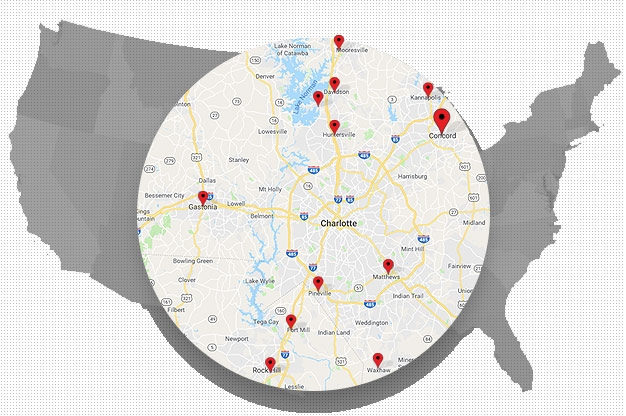What Does a Sump Pump Do For Your Home?

Few things are quite as horrifying as walking ankle-deep into a flooded basement, but unfortunately, it’s something most homeowners have had to contend with. You don’t even need a heavy downpour for your basement to soak. Light spring showers are known to cause basement flooding in some regions.
While spring rain works magic for your lawn, you can’t say the same for your basement. Most of the plumbing problems that lead to a flooded basement result from seasonal changes and drastic temperature variations. If you don’t have a proper sump pump in place, walking into a flooded basement during spring or winter is almost a guarantee.
If you’re sick and tired of rising water levels and basement floods, then it’s time to get a sump pump. However, before you do, it’s a good idea to understand how it works and the various types for your consideration.
What is a Sump Pump?
A sump pump is a special type of pump that you install below the surface of your basement floor. The sump pump’s function is to move water away from the basement to a drain point some distance away.
Karl Neidemeyer invented the first sump pump way back in 1946 after his stint in the US Navy. While using bug pumps to pull ships from water, he realized how effective these gadgets could be in residential flood prevention.
With time, the sump pumps evolved to be more efficient and are now widespread in homes across the country. In fact, the federal Clean Water Act made sump pumps mandatory in some states.
How Do Sump Pumps Work?
The function of a basement sump pump is to move water away from your basement to a drain point located far away from it. It consists of a single pit that you carve inside the basement floor. This pit is known as the basin and is used to hold the sump pump.
Inside the sump basin, you’ll find several holes in the wall. All of these holes connect to a drainpipe.
There are two types of drain pipes. The first set of drain pipes connect to weeping tile pipes from under the foundation, while the other set connects to internal drainage systems.
Whenever it rains heavily or snow melts, groundwater accumulates below your basement floor or under the foundation. The accumulated water flows through a drain a pipe right into the sump basin. When the water level reaches a certain point, the sump pump activates.
The sump pump activates via two methods.
Float activator arm: This is a lever arm attached to a buoyant ball that floats on the water’s surface. Once the water rises to a certain level, it floats the ball, raises the arm, and kicks the sump pump on.
Pressure sensor: The pressure sensor relays a signal to the sump pump when water in the sump basin exceeds a certain pressure to activate it.
Inside the sump basin, you’ll find a component known as an impeller that removes water from the sump basin and sends it through a drainpipe using centrifugal force.
As a rule of thumb, ensure you bury the discharge pipe at least five meters below the frost line to prevent the pipe from freezing during the cold season.
What Powers a Sump Pump?
Sump pumps can either integrate with the municipal water supply or use your home’s electricity supply. Pumps that work with the region’s water supply can work without electricity, making them ideal for regions with heavy rains and frequent power outages.
The downside to these types of sump pumps is they may push the water bill up if your municipal water rates are a bit costly. What’s more, you can always settle for an AC-powered sump pump with a backup battery for blackouts.
Types of Sump Pumps
When in the market for a sump pump, you’re bound to encounter several types. You need to choose a type with sufficient power to handle the amount of flooding you’re likely to encounter in your basement. That said, here are a few types of sump pumps you should consider.
Pedestal Sump Pump
The distinctive characteristic of this type of sump pump is that it contains a separate motor and pump. The motor, which sits on a pedestal on top of the basin connects to a pipe that runs to the basin. The pump removes water from the basin to the drainage area.
One advantage of pedestal sump pumps is that they last for a very long time with minimal sump pump repair. However, these sump pumps can cause quite a racket and take up a lot of space.
Submersible Sump Pumps
This type of sump pump sits submerged inside your basement basin hence the “submersible” tag. Because these sump pumps are submerged, they are often quieter than others and less likely to clog. Their main issue is that they may not last as long as you’d want them to and are likely to encounter common sump pump problems.
Battery-Operated Backup
As the name connotes, a battery-operated backup sump pump will go into “battery mode” in case of a power outage and still work like usual. This makes them ideal for storm-prone areas to work even after blackouts.
How Much Does a Sump Pump Cost?
The cost of a sump pump depends on the type you settle for and where you get it from. However, you should expect a sump pump to cost between $100 to $400. Usually, sump pumps with higher horsepower and flow rates are more expensive.
Install a Sump Pump Today
You have absolutely no reason why you shouldn’t install a sump pump today, especially if you live in a flood-prone region. Now that you know all you need to know about sump pumps, it’s time to get one for your home. However, make sure you buy the right type and pick a reputable installer for the best results.
The best waterproofing and sump pump installation company is only a phone call away. Contact us today for professional sump pump installation, and we’ll have your sump pump ready in a jiffy.
Recent Posts
- How Crawl Space Encapsulation Benefits the Environment – An Expert Guide
- 6 Ways Professionals Keep Your Crawl Space in Top Shape
- Structural Repair Solutions for Crawl Spaces, Basements, and Foundations
- Essential Crawl Space Repair Tips Every Homeowner Should Know
- The Importance of Radon Mitigation: Ensuring a Safe Living Environment for Homeowners
Categories
- Basement Mold
- Basement Waterproof Foundation
- Basement Waterproofing
- Crawl Space Dehumidifier
- Crawl Space Encapsulation Cost
- Crawl Space Repair
- Crawl Space Waterproofing
- Encapsulation
- Foundation Repair
- Foundation Waterproofing
- French Drains
- Leaky Basement
- Mold Remediation
- Mold Removal
- Radon
- Slab Jacking
- Sump Pump
- Uncategorized
- Vapor Barrier
- Water Leak
- Waterproofing
- White Mold
Archives
- June 2024
- May 2024
- March 2024
- January 2024
- June 2023
- May 2023
- April 2023
- March 2023
- February 2023
- January 2023
- December 2022
- November 2022
- October 2022
- September 2022
- August 2022
- July 2022
- June 2022
- May 2022
- March 2022
- February 2022
- January 2022
- December 2021
- November 2021
- October 2021
- September 2021
- August 2021
- July 2021
- June 2021
- May 2021
- April 2021
- March 2021
- February 2021
- January 2021
- December 2020
- November 2020
- October 2020
- September 2020
- August 2020
- July 2020
- June 2020
- May 2020
- April 2020
- March 2020
- February 2020
- January 2020
- December 2019
- November 2019
- October 2019
- September 2019
- August 2019
- July 2019
- June 2019
- May 2019

